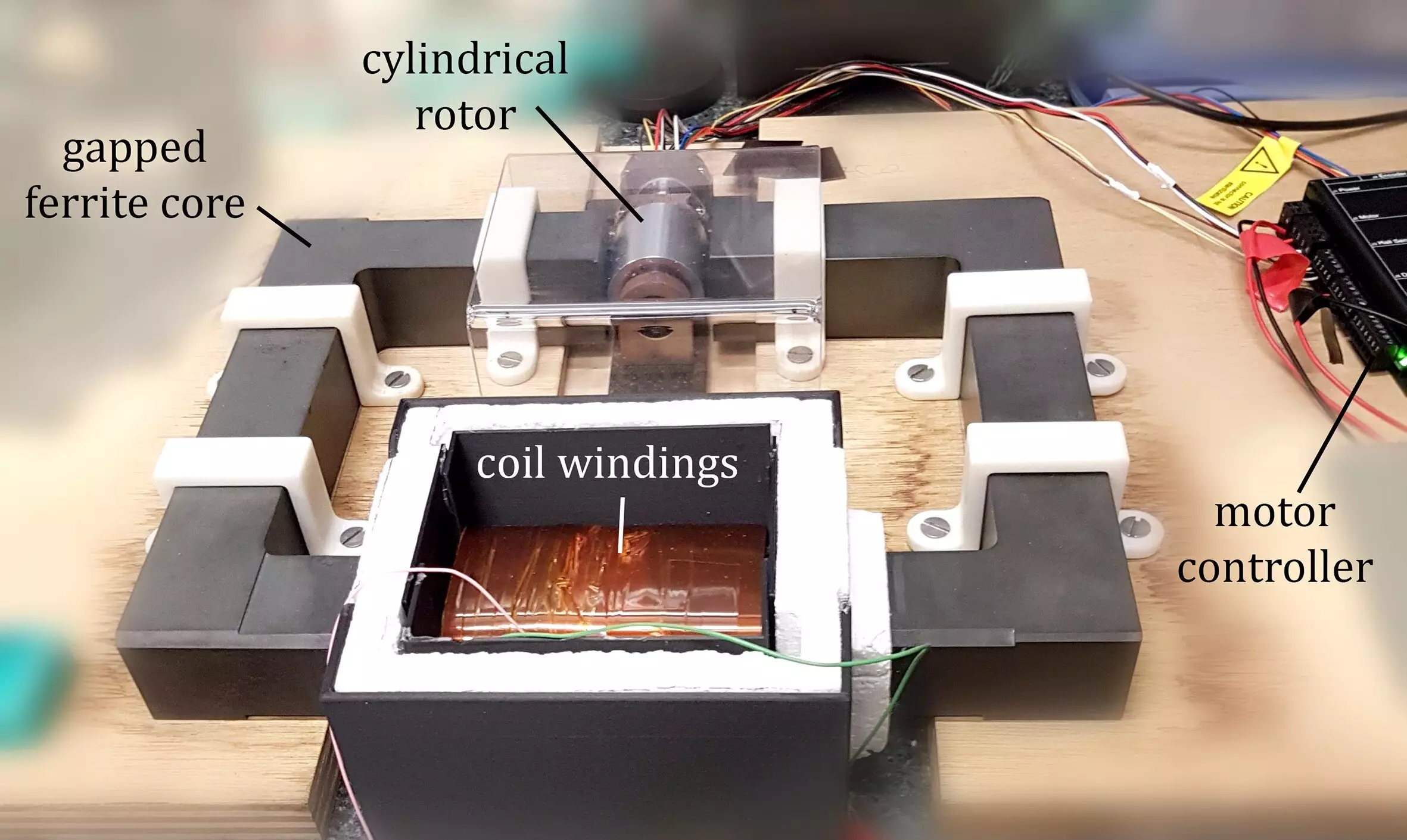In a remarkable advancement for the field of physics, researchers at the University of Southampton have successfully validated a theoretical concept that has remained unproven for half a century. The phenomenon, known as the Zel’dovich effect, originally theorized by the esteemed Soviet physicist Yakov Zel’dovich in the 1970s, is grounded in the interplay between angular momentum and electromagnetic wave behavior. This discovery not only sheds light on the intricacies of wave dynamics but also underscores the importance of rotational motion in wave amplification.
The hallmark of the Zel’dovich effect lies in its counterintuitive premise: under specific conditions, waves that would typically be absorbed by a rotating object can actually be amplified. This amplification occurs when the object—an aluminum cylinder in this instance—spins with sufficient velocity to facilitate the transformation of incoming twisted waves, characterized by their angular momentum, into waves with a negative frequency. This pivotal shift allows the waves to emerge from the cylinder with greater energy than they originally possessed.
Dr. Marion Cromb, a Research Fellow at the University of Southampton, articulates the mechanism underlying this phenomenon with clarity. In typical scenarios, a stationary object would absorb incoming waves, resulting in a loss of energy. However, the requirements for triggering the Zel’dovich effect involve a specifically calibrated rotational speed. The theory postulates that, from the perspective of the rotating cylinder, the interaction with incoming twisted electromagnetic waves leads to a rotational Doppler shift. When the speed of rotation surpasses the frequency of the incoming electromagnetic radiation, the wave frequency effectively transitions into negative territory.
This transformation hints at a significant conceptual leap in understanding wave dynamics. Traditionally, waves are viewed as entities that convey energy in one direction, and their interaction with various materials is typically in the form of absorption. The implication of this discovery—namely, that under the right conditions, electromagnetic waves can instead be reflected with enhanced energy—opens new avenues for exploration in physics.
The intricacies of the Zel’dovich effect become more accessible when linked to the well-known Doppler effect, an occurrence familiar to nearly everyone. Picture standing by a busy street as a police car approaches with its siren blaring. As the vehicle closes in, the sound waves compress, leading to a higher-pitched tone. Conversely, once past, the sound becomes lower in pitch due to the dispersal of wave frequencies. This everyday experience of the Doppler effect serves as a helpful analogy to grasp the principles behind the Zel’dovich effect, where rotational movement yields shifts in wave properties based on relative speed.
By extending the Doppler principles to twisted electromagnetic waves, the researchers have articulated a framework for a “rotational Doppler effect.” This novel approach not only elucidates the basic mechanics of wave behavior in fluid dynamics but also amplifies its relevance across various disciplines. The findings highlight the interconnectedness of physics domains, revealing how phenomena observed in classic acoustics carry over to electromagnetic wave theory.
The validation of the Zel’dovich effect within electromagnetic systems paves the way for explorations at the quantum level. Professor Hendrik Ulbricht, who supervised the research, emphasizes the foundational nature of these findings, expressing optimism for their implications in future studies. The potential to observe the Zel’dovich effect at the quantum scale holds significance for fields such as condensed matter physics and quantum optics. This could ultimately lead to a deeper understanding of how waves interact with virtual particles, potentially harnessing the energy permeating the quantum vacuum itself.
Additionally, the practical applications of this research may extend beyond theoretical exploration. The implications for electrical engineering are significant, particularly for the development of more efficient induction generators. Innovations in this area could have profound impacts on renewable energy technologies, including those utilized in wind turbines, ultimately contributing to the global shift towards sustainable energy solutions.
As Dr. Cromb reflects on the challenges overcome during the project—particularly during the COVID-19 pandemic—the importance of teamwork and collaboration in scientific research shines through. The ability to drive forward a complex experiment amid global uncertainty speaks to the resilience of the scientific community. The successful demonstration of the electromagnetic Zel’dovich effect not only cements a historic theoretical milestone but also inspires further inquiry into the fundamental principles governing our universe, bridging the gap between theoretical physics and practical application.
This research not only validates a concept rooted in theoretical physics but opens the door to a myriad of new possibilities, inviting future generations of scientists to unravel even more complex interactions between matter and energy.


Leave a Reply